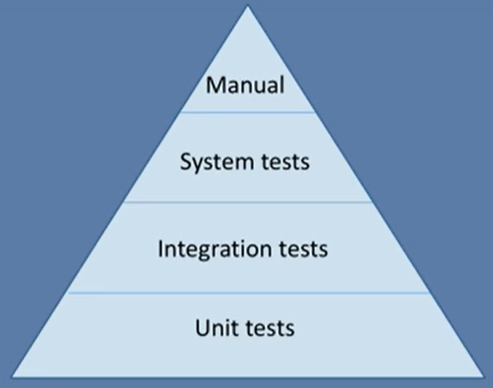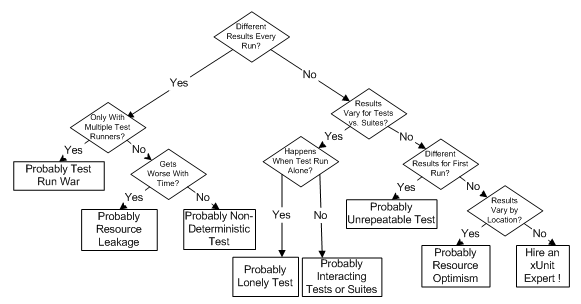This repository contains the code examples and exercises of TU Delft's edX MOOC on Software Testing.
This repository is licensed under CC BY-NC-SA.
- Test analysis and design
- Test execution
- Failure: A component or system behaves in a way that it is not expected
- Defect or bug or fault: A flaw in a component that can cause the system to behave incorrectly. A defect, if encountered during execution, may cause a failure
- Error: A human action that produces an incorrect result
- Validation: is more about making sure that our system delivers what the user needs it to deliver. are we building the system that our users really want?
- Verification: is more focused on, are we building the system, right?. with verification, we make sure that our system delivers what the specification wants it to deliver, that it is free of bugs.
"Testing can show the presence of defects, but testing does not actually show their absence."
Some might say: "I write 100 lines of production code a day... Now, if I have to write automated tests, I will write 50 lines of production code a day and 50 lines of test code a day... So, I'm less productive now!"
- Identificar parametros
- Caracteristicas de cada parametro
- Add constraints
- Generar combinaciones
you probably feel that, although we have 100% line coverage, our tests are not enough.
In practice, there is no single technique that gives us 100% confidence that our systems are tested enough.
That's why we should combine all the different techniques we learned so far and test as much as we can!
A better criteria here would be to make sure we have at least one test for each branch or for each arrow in the graph.
Condition coverage seems to cover more cases than branch coverage... or line coverage, for that matter!
Path coverage means that we want to really test all the possible paths and combinations
Unit tests search for defects in and verifies the functioning of software items. For example, modules, programs, objects, classes, etc., that are separately testable.
Unit tests, meaning we were testing one unit isolated from the rest, and the other extreme was system test, or black box test,
Cuando una clase interactua con una base de datos y queremos testear esto.. eso seria una prueba de integracion
ISQTB: defines Integration tests when you test interfaces between components, interactions to different parts of a system such as OS, file system, hardware, or interface between systems.
However, one thing that we see in practice is people doing what we call the ice cream cone test, which is the testing pyramid, but the other way around. They do just a small number of unit tests, they do a lot of system tests and they do a lot of manual tests. You should avoid doing this ice cream cone way of testing. You should focus more on the testing pyramid.
This simulation in software testing, we call it a mock object. So when we say, we're gonna mock some object, we're saying we're gonna create a simulation of a specific class, just for the sake of testability
In other words, controllability is about how easy it is for us to provide inputs and invoke the behaviour that we want in the system under test. Observability is about how easy it is for us to observe the system under test in order to verify whether the system behaved as expected.
Existen patrones para hacer tests unitarios
- FAST: should be fast
- Isolated: we want our test to test an isolated piece of functionality, and good unit tests usually focus on a small chunks of code.
- Repeatable: We don't want tests that pass sometimes and fail some other times.
- Self-validating:
- Timely: You need to make sure that automated testing becomes a habit.
- Duplicated code
- Assetion roulette
- Slow tests
- Resource optimism
- Test run war
- General fixture
- Indirect tests
- Sensitive equality
Sometimes it passes, sometimes it fails...? We call them flaky tests.
Reasons:
- you have a test that depends on an external infrastructure, like a database or a web service.
- developers are sharing resources, some other person changes the database, and this affects your tests.
- you have time-outs, Your test is waiting for something to happen in the web application, The web application, for some reason, gets one second slower, and then your test fails because of that.
- you have interacting tests. So, test one, for some reason, interacts with test two, and vice-versa.
- Arrange
- Act
- Assert
No tener valores magicos, sino mas bien tenerlos en variables con nombres entendibles
###
